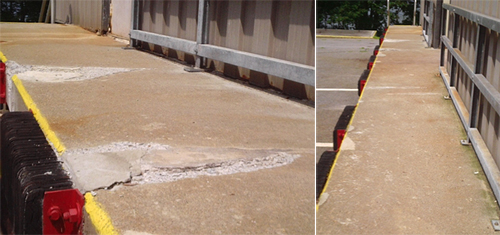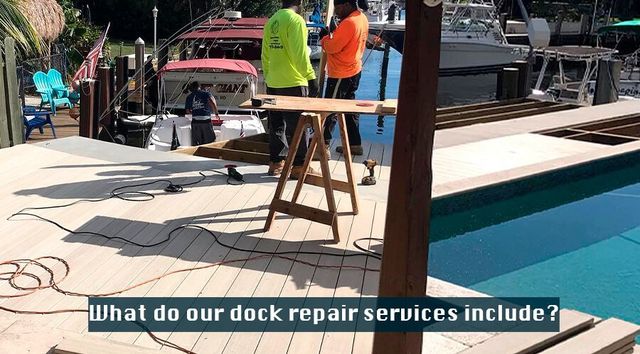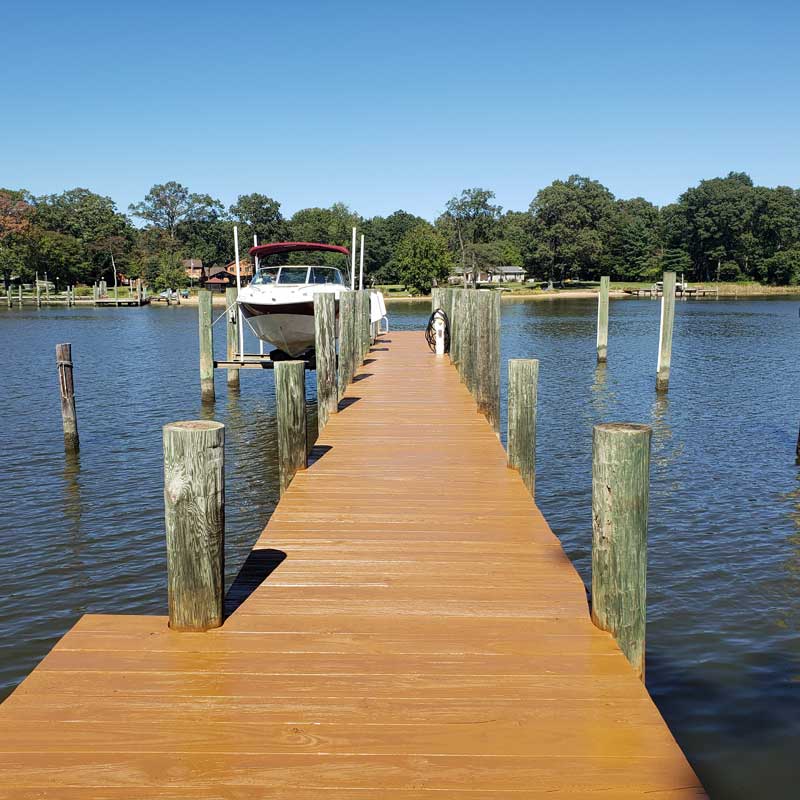Leading Indications You Required Professional Dock Repairs This Period
Leading Indications You Required Professional Dock Repairs This Period
Blog Article
Reliable Dock Fixing Techniques: Making Certain Architectural Stability
Ensuring the architectural honesty of anchors with efficient repair work methods is critical for the long life and safety of aquatic centers. This includes a multi-faceted technique starting with comprehensive inspections making use of advanced innovations like sonar equipment and from another location ran cars (ROVs) to spot both visible and hid problems. Subsequently, picking the ideal repair service materials, such as corrosion-resistant alloys and composite materials, is important for sturdiness. Structural reinforcement approaches, consisting of the implementation of cross-bracing systems and load-distribution plates, play an essential function in mitigating tension factors. Nevertheless, the significance of these strategies ends up being apparent when discovering sophisticated repair approaches and preventative upkeep techniques.
Examining Dock Damages
Assessing dock damage is an essential very first step in making certain the architectural integrity and security of any type of docking center. This first evaluation entails a detailed inspection to identify both visible and hidden problems. Key facets to check out include the dock's foundation, pilings, outdoor decking, and equipment. Each component must be inspected for indications of wear, rot, rust, or various other types of destruction that can endanger the architectural honesty.
Architectural engineers or qualified inspectors usually carry out these evaluations utilizing specialized techniques and devices. For circumstances, undersea assessments may utilize sonar equipment or remotely ran lorries (ROVs) to identify immersed damages. Above water, aesthetic assessments are matched by utilizing moisture meters and various other diagnostic tools to reveal underlying problems not instantly noticeable to the nude eye.

Choosing Repair Service Products
Selecting the suitable repair service products is a crucial action in the dock remediation process, one that straight affects the longevity and efficiency of the fixed framework. Product choice must be driven by aspects such as environmental problems, load-bearing demands, and compatibility with existing dock components. Timber is a standard option for docks due to its natural resilience and aesthetic allure. Selecting the right kind of timber, such as pressure-treated lumber or naturally rot-resistant species like cedar or teak wood, is vital to stand up to water environments.
Along with wood, composite products are significantly prominent because of their sturdiness and reduced upkeep demands. Compounds, normally made from a mix of plastic and timber fibers, supply superb resistance to rot, bugs, and UV damages. For metal docks, choosing corrosion-resistant alloys such as galvanized steel or marine-grade light weight aluminum is necessary to stop rust and make sure structural honesty in saline water conditions.
Epoxy materials and marine-grade sealants are indispensable for fixing cracks and securing joints, providing a water resistant barrier and improving the dock's total stamina. By diligently choosing high-grade materials, dock repair work can achieve durable outcomes, thus securing versus future destruction and ensuring risk-free, reliable usage.
Architectural Reinforcement Techniques
Reliable structural reinforcement methods are important in making certain the security and long life of dock repair work. One basic approach entails the usage of steel or composite support bars (rebar) within concrete frameworks. Rebar supplies extra tensile stamina, stopping fractures and distributing tons much more uniformly. This method is particularly effective for docks exposed to hefty lots or rough ecological problems.
An additional necessary strategy is the application of fiber-reinforced polymers (FRP) These materials use high strength-to-weight ratios and outstanding resistance to corrosion, making them excellent for enhancing wood or concrete anchors. FRP can be used in strips or click for source sheets and adhered with epoxy materials to enhance architectural stability.
Bracing and securing systems also play an essential duty in structural reinforcement. Cross-bracing, click this site utilizing metal or wood beams, can neutralize lateral forces, lowering persuading and movement. Securing systems, such as helical piers or driven piles, give a steady structure by transferring loads to much deeper, more secure dirt layers.
Finally, the integration of load-distribution plates can aid distribute weight more equally across the dock's surface, minimizing localized tension factors. These methods collectively ensure that anchors stay safe and robust, with the ability of standing up to the roughness of their functional environment.
Advanced Repair Service Methods

An additional advanced find out technique includes underwater welding, which enables for fixings to be conducted without the requirement to dewater the location. This approach is particularly helpful for resolving architectural concerns in immersed dock parts, ensuring marginal disturbance to operations. Boosted welding strategies, paired with robotic systems, deliver precision and dependability, consequently prolonging the life-span of the dock.
Furthermore, cathodic protection systems are applied to protect against rust in metallic dock structures. By making use of sacrificial anodes or satisfied present systems, these methods effectively minimize the electrochemical procedures that result in material damage.
Finally, advanced surveillance innovations, such as structural wellness tracking (SHM) systems, offer real-time information on the problem of dock structures. These systems enable aggressive maintenance and prompt interventions, ultimately ensuring the lasting structural integrity of the dock.
Upkeep and Prevention
Upkeep and prevention are essential concepts that underpin the long life and safety and security of dock frameworks. Routine inspections are extremely important, permitting for early discovery of deterioration, possible weaknesses, and ecological effects. An aggressive strategy, involving routine look for rust, rot, and architectural shifts, reduces costly fixings and extends the dock's functional life.
Preventive steps should include applying protective finishes to metal elements to defend against rust and utilizing cured timber to withstand decay. In addition, making sure proper drainage and ventilation can stop water buildup, which is a common source of structural deterioration. Including quality materials and sticking to manufacturer guidelines during building and construction and repair service stages also play essential roles in improving durability.

Educating workers in dock maintenance best techniques makes certain regular application of safety nets. Leveraging technological advances, such as drones for examinations and sensing units for real-time tracking, can further boost upkeep efforts. By focusing on upkeep and prevention, dock proprietors can make sure structural integrity, functional safety and security, and economical administration over the dock's lifespan.
Conclusion
To conclude, keeping the architectural stability of marine centers requires comprehensive dock fixing strategies. Complete assessments using innovative tools reveal both noticeable and concealed problems, while the option of appropriate repair products enhances durability. Carrying out structural reinforcement methods addresses anxiety factors successfully. Advanced repair methods, coupled with routine upkeep methods, make sure the dock continues to be risk-free and functional under diverse environmental problems. Taking on these techniques significantly extends the life expectancy and functionality of marine facilities.
Ensuring the structural integrity of docks through effective repair work methods is vital for the durability and security of aquatic facilities.Choosing the proper repair service materials is an essential step in the dock remediation process, one that directly influences the longevity and performance of the fixed framework.Reliable architectural support methods are important in making certain the stability and durability of dock fixings. By focusing on upkeep and prevention, dock owners can ensure structural stability, functional security, and affordable management over the dock's life-span.
In final thought, preserving the architectural integrity of marine facilities necessitates thorough dock repair methods.
Report this page